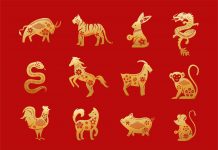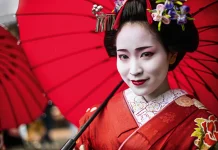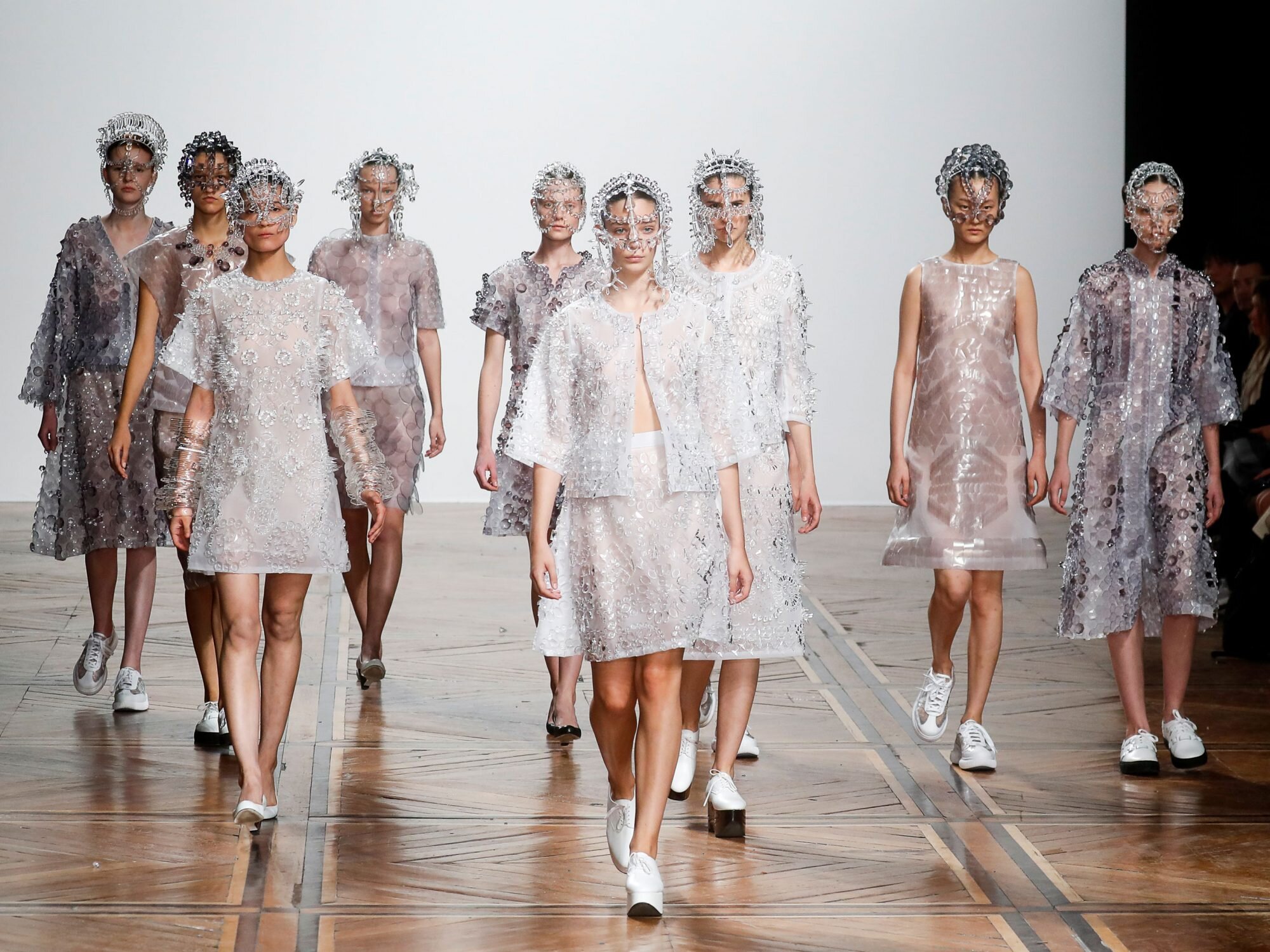Today, it is our fashion designers who bring us closer to the latest trends and elegant combinations. Fashion and accessory design influences fashion conscious people every day. In addition to fashion weeks and other exhibitions, where the best designers present their latest collections, everyone can follow the latest trends in everyday life on the Internet, on television and in the windows of different brands. There are a lot of newcomers, but only a few are known permanently as Olymp Mode and convince with their designs.
From Coco Channel to Yves Saint Laurent via Mary Quant and Hubert de Givenchy, today we are talking to you about the greatest couturiers and most emblematic fashion designers in history. These great names, for those who know, have marked history by the rigor in the work, the originality of their respective artistic creations, but also their bravery. Here are now the most illustrious personalities of haute couture.

Who is the Fashion Designer
The fashion designer is the mind behind the artistic creation of a garment or accessory. Designers study fashion trends, draft, select colors and fabrics and supervise the final production of their designs. Fashion design has become highly competitive today. If you want to pursue a career in this industry, you will need to work hard and develop collateral skills. First, of course, be formed from a recognized fashion and design school, but also allenar you to the visual arts to 360 degrees. This is if you really want to stand out from the crowd.
They can work in haute couture, as well as ready-to-wear, but they can also start their own business as a freelancer. Typically, the fashion designer specializes in a specific area: clothing, footwear or accessory design and their related sub-categories, such as men’s, children’s or sportswear.
This means that the fashion designer is not only concerned with creating a look that will influence new trends, focusing exclusively on the visual impact of the garment, but will also focus on its functional characteristics.
Working as a fashion designer therefore means being able to interpret the society that surrounds us, proposing products that know how to ride the trend of the moment, associating this with the effective functionality of garments and accessories.
A very particular job that certainly requires a good dose of creativity, but also an excellent spirit of observation and adaptation to what are the social phenomena that you will have to learn to notice in a constantly changing world like that of fashion!
From a professional point of view, the work of fashion designer is particularly interesting because it will allow you to work both as a freelance and within companies and industries, choosing a long-term career.
What are the requirements to become a fashion designer?

Fashion design is an art form which created trends and the most fashionable clothes over the 80s, 90s, and 2000s. To work as a designer, you need to have an artistic and creative personality. It is essential to have talent in drawing and to be able to express ideas in the form of sketches. You don’t necessarily have to be a great artist, but you do need to have some special skills to combine colors, tones and shades. You also need to be able to work with the fabric and combine it in a creative and original way.
Stylists need to be aware of the needs of the fashion market. They are required to keep up to date by reading magazines, newspapers and books on the history of fashion design and new trends. They also need to be interested in art, visit art galleries, and interact with all kinds of artists whenever they get the opportunity. A designer should also have some knowledge and experience of tailoring (cutting, draping, sewing, etc.) and be able to distinguish the different quality levels of the fabric.
A good understanding of customer habits and needs is also required in fashion design. But above all, they must be very original and have fresh and innovative ideas.
The path to becoming a fashion designer
Most of the stylists have a degree in fashion and costume sciences or have attended a specialized technical institute. In any case, it will be necessary to learn notions in the field of the history of fashion, fabrics, digital design and design, market analysis and consumer trends. The training course generally lasts 2 or 3 years, and to find out more, it is very useful to follow the sector open days, such as those that will take place on the next 8 and 9 September. These are the Modartech open days which include a virtual open day on 8 September and an open day on 9 September where you can see the classrooms, the workshops and learn everything about the training proposals, including the fashion design course starting in October.
Furthermore, to hone the skills needed to carry out a project from idea to finished product, laboratory practice is important. Field experience can be gained by participating in an internship program with a design company, clothing manufacturer, or tailoring studio.
Behind the creative flair of the fashion industry is the business acumen needed to keep a business running. In addition to learning the creative side of the field, students should also familiarize themselves with what goes on behind the scenes, such as studying industry trends, sales and marketing, particularly if they wish to have their own fashion business.
In order for future fashion designers to showcase their talents to potential employers, they need to create a portfolio that demonstrates their creative skills and sensibilities. Students can update it with the work done during the training course, so it is important to consider each assignment as the business card for a future company.
Especially in this sector, you never stop learning. The fashion industry changes from season to season, so it’s important for designers to keep up with the trends in the field.
There is stiff competition for jobs in this industry, so any contacts and work experience you have, such as through an internship, will help you find a job.
How does a fashion designer work?
A designer who works for wholesalers or international brands creates designs for the world market. These wholesalers and manufacturers sell clothing and accessories to retailers or other marketers for distribution to individual stores or online shops.
Self-employed designers typically create haute couture and one-of-a-kind dresses, generally tailored and at higher prices. In some cases, a freelance stylist may have a clothing line that bears his name. Some designers specialize in creating costumes for the performing arts, films and television productions. They can also work with directors to select and create certain outfits. Regardless of their work environment, all stylists occasionally work long hours to meet deadlines or prepare for fashion shows.
The nature of the fashion business requires consistent communication with suppliers, manufacturers and customers. Many designers travel several times a year to meet fabric and material suppliers and manufacturers, as well as catch up on the latest fashion trends.
How will the work of the fashion designer evolve?

The most innovative fashion designers are starting to adopt new technologies such as body scanning for a personalized fit, along with seamless knitting technologies that can produce garments with the push of a button.
Both techniques are a prelude to the trend towards automation that will once again revolutionize the fashion industry. Just as the sewing machine has changed the face of fashion in the past, technology will change it in the future.
The designers of the future will continue to meet the needs of their customers, but they will do so using new resources and tools. Designing clothes in the future may have more to do with functionality than fantasy.
What does the fashion designer do?
Large apparel companies typically employ a team of designers led by a creative director. Some designers specialize in the design of clothing, footwear or accessories; others create models in all three categories of fashion.
Before starting with the creation of a new model, the fashion designer must be updated with the trends of the moment, trying to predict the future ones, for example by reading the reports published by the commercial groups of the fashion industry. Other designers create collections using a variety of inspirations, including artistic media, their surroundings, the cultures they have come into contact with and the places they have visited.
After having an initial idea, stylists try various fabrics and produce a prototype, often with less expensive material than what will be used in the final product. Although most designers initially use hand-drawn sketches, many now also draw their ideas digitally with Computer Aided Design (CAD) programs. CAD allows designers to see their work on virtual models. They can try out different colors, designs and shapes while making changes easier than they can when working with real fabric on real people.
The designers then produce the samples with the actual materials that will be used in production. Those that get good feedback from fashion editors and fashion shows are then produced and sold to consumers.
The design process can vary according to the specialization of the fashion designer, but it generally takes 6 months, from the initial design concept to the final production, to complete the spring or autumn collection.
The greatest fashion designers
Famous and important fashion designers – including Karl Lagerfeld, Coco Chanel, Dontella, Versace and Yves Saint Laurent. The list of good designers is long and constantly updated. They are not only present on the catwalks in Paris, Milan, London or New York, they also create big brands with their own names. We have compiled the most important names for you.
PAUL POIRET

Born in 1879, this great French designer is considered a precursor of the Art Deco style. He opened his fashion house in 1903, abolished the corset, preferring to dress women in high waisted dresses. He therefore played an important role in female emancipation in the 1900s. Remember that it is to him that we owe the sheath.
CRISTOBAL BALENCIAGA
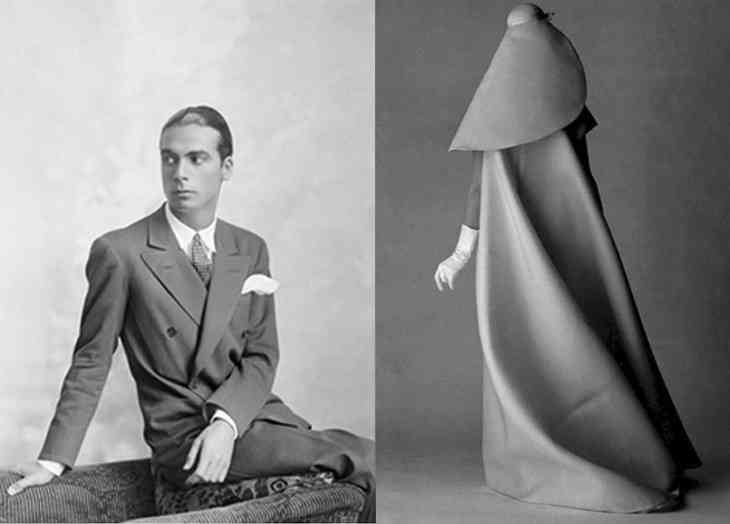
Born in Spain, the nicknamed “master” or “couturier of couturiers” inherited couture. Indeed, it is his mother who transmitted his passion to him. Having become passionate in his turn, he opened his very first fashion house in San Sebastian in 1910. He moved to Paris (on Avenue George-V) after 20 years of practice in Basque soil. He is particular for his creative style full of sobriety, but also for his daring combinations of colors. Nowadays, you can find Balenciaga museum which represent the brand and is one of the most beautiful fashion museums in the whole world.
YVES SAINT LAURENT

He is undoubtedly one of the most famous couturiers in the world. His reputation is so important that his life was the subject of a film released in 2014. Born in Oran, Algeria, companion of Pierre Bergé, Yves Saint Laurent is also one of the greatest French fashion designers. He spent his youth in his hometown before coming to France to work under Dior. After the latter’s death, the young Yves Saint Laurent decided to replace his boss. He had an impressive success there at only 21 years old, and this from the first “Trapèze” collection. A few years later, he left Dior to create a business in his name (Yves Saint Laurent SAS) with his companion Pierre Bergé.
Yves Saint-Laurent is the creator of the modern woman’s wardrobe; the renovator of the pea coat and trench coat; the instigator for women of the first tuxedo, the Saharan and the first pantsuit.
COCO CHANNEL

Known as Gabrielle Chasnel in the civil registry, Coco Channel is undoubtedly one of the most giant designers in the history of fashion. Renowned French milliner and seamstress, she has acquired her reputation through her many haute couture creations and her perfumes. His very first artistic work was on original hats. Needless to say, it has had some success. In 1915, she opened in the city of Biarritz in France her first fashion house. This is how she began by making herself known to the general public thanks in particular to her work on skirts. Three years later, that is to say just after the end of the First World War, Coco Channel is already at the head of a large fashion house of over 300 seamstresses. In 1921, she opened a second workshop in rue de Cambon, not far from Place Vendôme. Her little black dress was an impressive success in the 1926s. Finally, let us remember that Coco Channel was also the first great seamstress to launch its range of perfumes.
HUBERT DE GIVENCHY
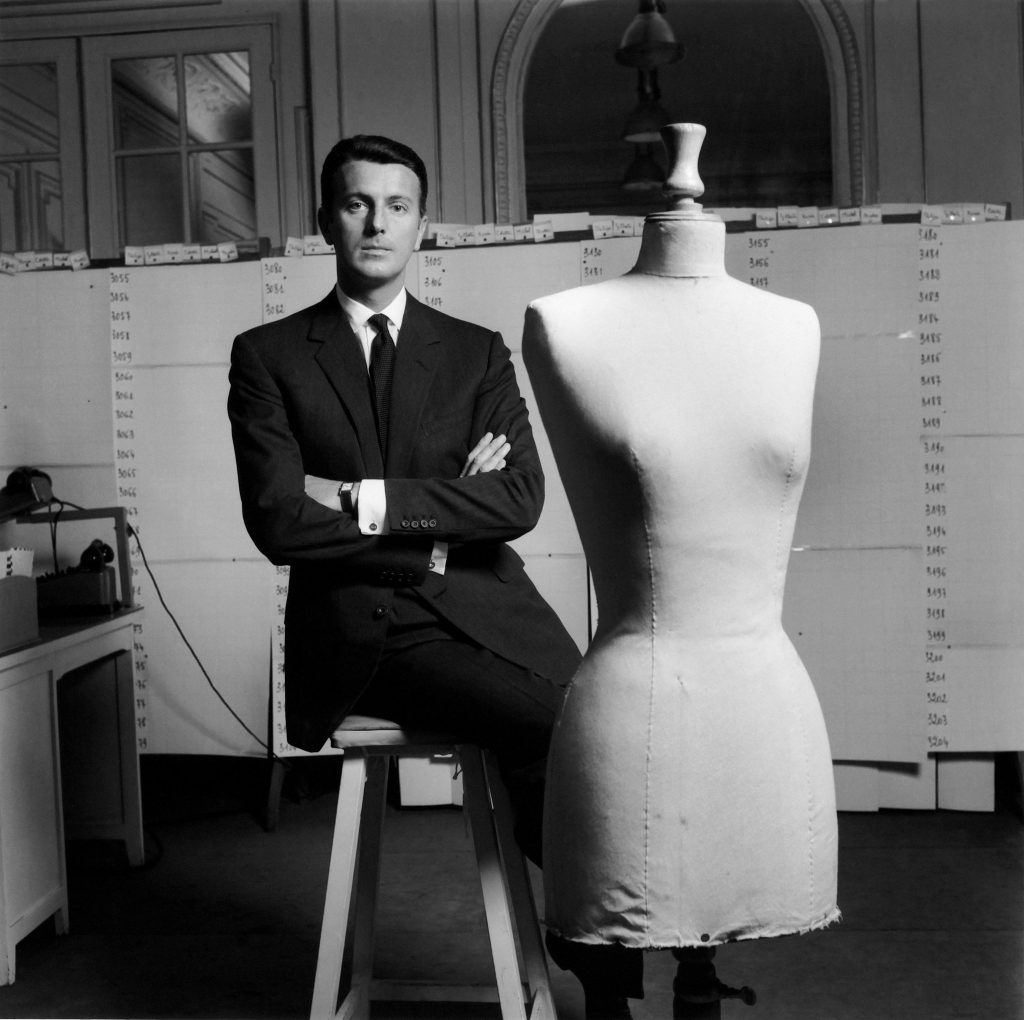
Renowned couturier, creator of the haute couture brand Givenchy, Hubert de Givenchy opened his own haute couture house in 1952. He was one of the first designers to offer a luxury ready-to-wear line. Friend with Balenciaga, he is also a great admirer of the latter. American actress Audrey Hepburn was her muse.
MARY QUANT

Does this name mean anything to you, dear ladies? If not, now is the time to burn it into your cerebellum, because it is Mary Quant that you owe your mini skirts. The Brit started as the manager of a clothing store on Kings Road in London. After a few years, she decided to create her own line of clothing. An ambition filled with hard work and determination that finally paid off in 1960, when it invited your adorable mini-skirt. She remained for a long time a figure of the mode of the English capital. Towards the end of her career, the lady became interested in home accessories as well as makeup.
EMILIO PUCCI

Born in November 1914, Emilio Pucci is an Italian stylist and fashion designer. Known in particular for his pop prints, flash colors and graphic patterns, the nicknamed “prince of prints” left his mark on the history of “catwalks” in his own way. He died on November 29, 1992 after several decades of international success.
JEAN PAUL GAUTIER

The Frenchman has designed a fashion that is difficult to wear. In addition to the playful and at the same time strictly formal aspect, he made an unusual selection of his models and led the style in the direction of pop culture. Just Madonna was a huge fan of him.
ELSA SCHIAPARELLI

She was born in Rome and is the grandmother of the actress Marisa Berenson. Her concept was a fashion for modern women, so she designed garments that could be swapped, for example, a black sweater with a large white braided bow. He made fuchsia a trendy color and called it Shocking Pink. She worked with Salvador Dalí on various designs: the lobster dress, the shoe hat and the phone bag.
KARL LAGERFELD

Karl Otto Lagerfeld has become one of the most influential men in the industry. All his life he was a real star, with his slightly eccentric personality and always surrounded by models and celebrities. Thanks to her outstanding work at Chanel, she managed to re-emerge the brand a decade after Coco’s death. From there he worked for the most important brands, including Fendi, for which he contributed all his knowledge until the day of his death at the beginning of 2019.
DOMENICO DOLCE AND STEFANO GABBANA

Two other very famous Italian designers are Domenico Dolce and Stefano Gabbana, creators of the famous “D&G” brand which is gaining popularity in Italy and other parts of the world. The brand was founded in 1985 and soon became very popular for its unique look, under the D&G brand. They have developed different products from clothes to all fashion products.
GUCCIO GUCCI
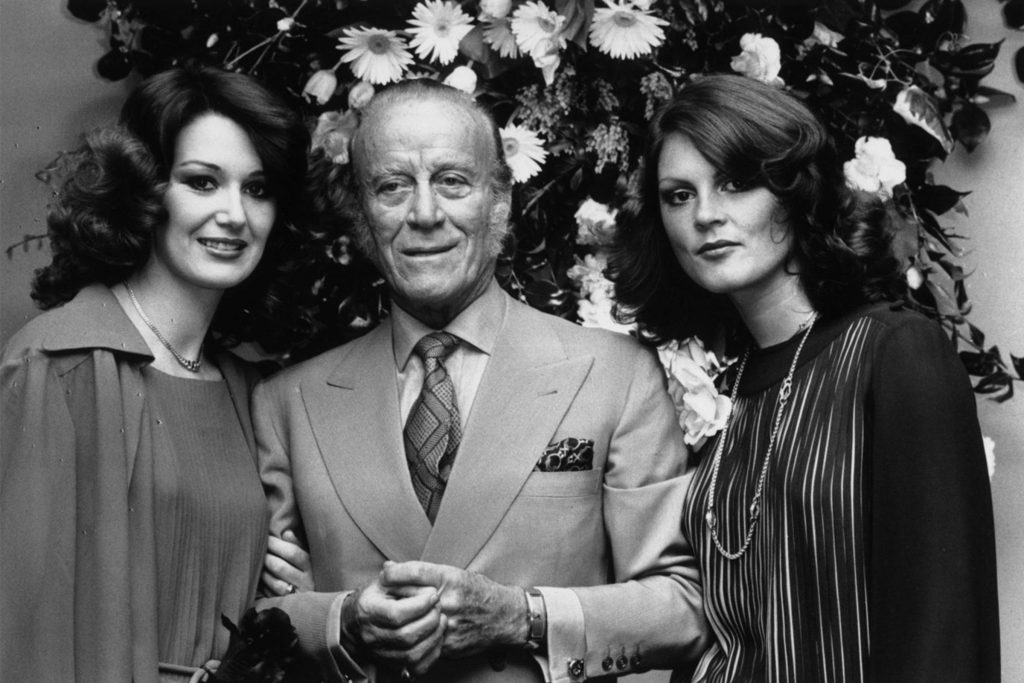
Guccio Gucci is one of the greatest fashion designers who shaped fashion. Born in Florence, Guccio Gucci worked as an elevator boy in upscale hotels in Paris and London before discovering his interest in fashion. In 1921, he laid the foundations for Gucci, one of the world’s leading fashion brands, and founded Maison Gucci. Born from a small family business selling leather goods, Gucci has been able to rise thanks to the production philosophy and the concept of quality of Guccio Gucci. Anxious to manufacture its products using the highest quality materials, hired leather and sewing artisansthe most talented in the Florence region and has set up an industrial production line while maintaining traditional methods.
Top luxury brands
The world of fashion has always been synonymous with glamor and luxury. Many items signed by major brands, from handbags to high fashion clothing, are highly sought after at auctions today. More than just fabrics, certain creations, such as the Valentino ball gown or the Chanel bag, have changed the perception of the body and the sexes in society. Here are the eight most searched fashion brands on Barnebys.
Balenciaga

Couturier of Spanish crowned heads, Cristobal Balenciaga (1895-1972) worked in San Sebastián until 1927, when he moved to Paris at the outbreak of the Spanish Civil War. Throughout the 1950s and 1960s, her haute couture shows breathed new life into the Empire waist and set the catwalks ablaze with innovative pieces such as the high waist Baby Doll dress, the Balloon jacket or the Sack dress.. Balenciaga also designed the wedding dress for Queen Fabiola of Belgium in 1960 and the ivory dress for First Lady Jackie Kennedy, which she wore to the Presidential Inaugural Ball in 1961. Although it closed her house in 1968, the The brand was brought back in 1986 and today specializes in chic with an urban twist, as evidenced by the Classic City and Motocross handbags and high-end streetwear collections.
Burberry

An emblem of British fashion, the Burberry label was founded in 1856 by Thomas Burberry (1835-1926), who then sold clothes in gabardine, a waterproof wool fabric of his own invention. The brand’s coats were worn by the greatest explorers of the 20th century, but also by British officers during the First World War who unwittingly gave it the name “trench coat” ( trench translating to trench ). After the conflict, the Burberry trench coat, with its interior lining featuring the famous check pattern, became popular. In the 1970s, the brand expanded its range to include ready-to-wear, accessories, handbags, shoes and cosmetics.
Dior

In the aftermath of the Second World War, Christian Dior (1905-1957) presented his first models: loose, puffy skirts cut to mid-calf and fitted waist jackets that turned heads and revolutionized fashion codes. In the 1950s, Dior created complete collections, including ready-to-wear, haute couture, hats, accessories and perfumes.
Dior soon represented 50% of French fashion exports and captured the attention of the greatest actresses of the time, such as Marilyn Monroe and Marlene Dietrich, who inspired the historic phrase: “No Dior, no Dietrich”. Even after the founder’s death in 1957, the brand endured, more elegant than ever, and established its reputation with flagship creations such as the famous Lady Dior bag.(1995) named after Princess Diana, Eau Sauvage eau de toilette (1966) and the timeless J’adore line (1999).
Gucci

The world’s best-selling Italian brand, Gucci was launched in 1921 under the leadership of Guccio Gucci (1881-1853), who opened their first high-end leather goods store in Florence. The brand has spread throughout Italy with its decorated moccasins and canvas luggage and handbags. In the 1950s and 1960s, Gucci was a global phenomenon, diversifying its lines with belts, eyewear, jewelry and even sports cars. In the 1990s, stylist Tom Ford propelled “chic porn” as the image of the fashion house: he transformed the old Italian leather goods manufacturer into a luxury and sexy leading company. Gucci now includes items decorated with the famous monogram and red and green stripes, the signet ring with the initials and the bamboo handle.
Valentino

Named in honor of the 1920s movie star Rudolf Valentino, designer Valentino Garavani (b.1932) founded his eponymous brand in 1960 in Rome. Inspired by Parisian haute couture, Valentino’s extravagant and feminine outfits were all the rage throughout the second half of the 20th century, especially his lavish red dresses inspired by dresses of yesteryear. Although the designer retired in 2008, the brand is still as popular as ever and vintage pieces particularly sought after at auction.
Hèrmes

Launched as an equestrian accessories store in Paris in 1837 by Thierry Hermès (1801-1878), the brand is today the emblem of French luxury. Success struck in the 1920s, with the arrival of handbags and silk squares. The Kelly bag, created for Grace Kelly, and the Birkin bag, for and by actress Jane Birkin, are probably the two most recognizable Hermès creations. The demand was such that the brand had to set up a waiting list that could extend to several months. The equally iconic silk squares were worn by Queen Elizabeth II and Audrey Hepburn, and there are over 2,000 screen-printed designs. Today, the famous brand also offers ready-to-wear, perfumes, silk ties and even decoration.
Louis Vuitton

The logo is everywhere today, but who was Louis Vuitton? Vuitton (1821-1892) was the first trunk maker in Paris from 1854, and the official luggage maker for Empress Eugenie, wife of Napoleon III. He designed lightweight, stackable travel trunks and even invented the first anti-pick lock. The famous “LV” monogram was patented in 1896 and throughout the 20th century, the brand expanded its range of leather goods to handbags and wallets, up to ready-to-wear in the 1990s, with Marc Jacobs. at the bar. Speedy and Neverfull bagsare the most famous of the label. Vuitton has also collaborated with famous artists such as Yayoi Kusama, Takashi Murakami and Urs Fischer, on pieces produced in limited edition.
Chanel

The most sought after brand by Barnebys users, Chanel began in 1909 when Gabrielle “Coco” Chanel (1883-1971) opened a hat shop in Paris. As the role of women changed to adapt to World War I, Chanel’s designs responded to the phenomenon: jersey sweaters, woolen blouses and skirts formed the Chanel “costume” in the 1920s. the designer: “Fashion is in the sky, in the streets, fashion has to do with ideas, the way we live, what happens”.
In 1921, Chanel launched perfume n ° 5, its signature. Throughout the 20th century, the brand featured haute couture, perfumes, ready-to-wear, fine jewelry (notably its famous pearls) and the iconic quilted handbag 2.55, named after its launch date. After Coco’s death, Karl Lagerfeld took over, re-energizing the brand’s traditional designs in a more avant-garde style. The legendary logo illustrating two intertwined C’s, which appeared in the early 1990s, is today synonymous with French elegance and femininity. Just like Coco.






